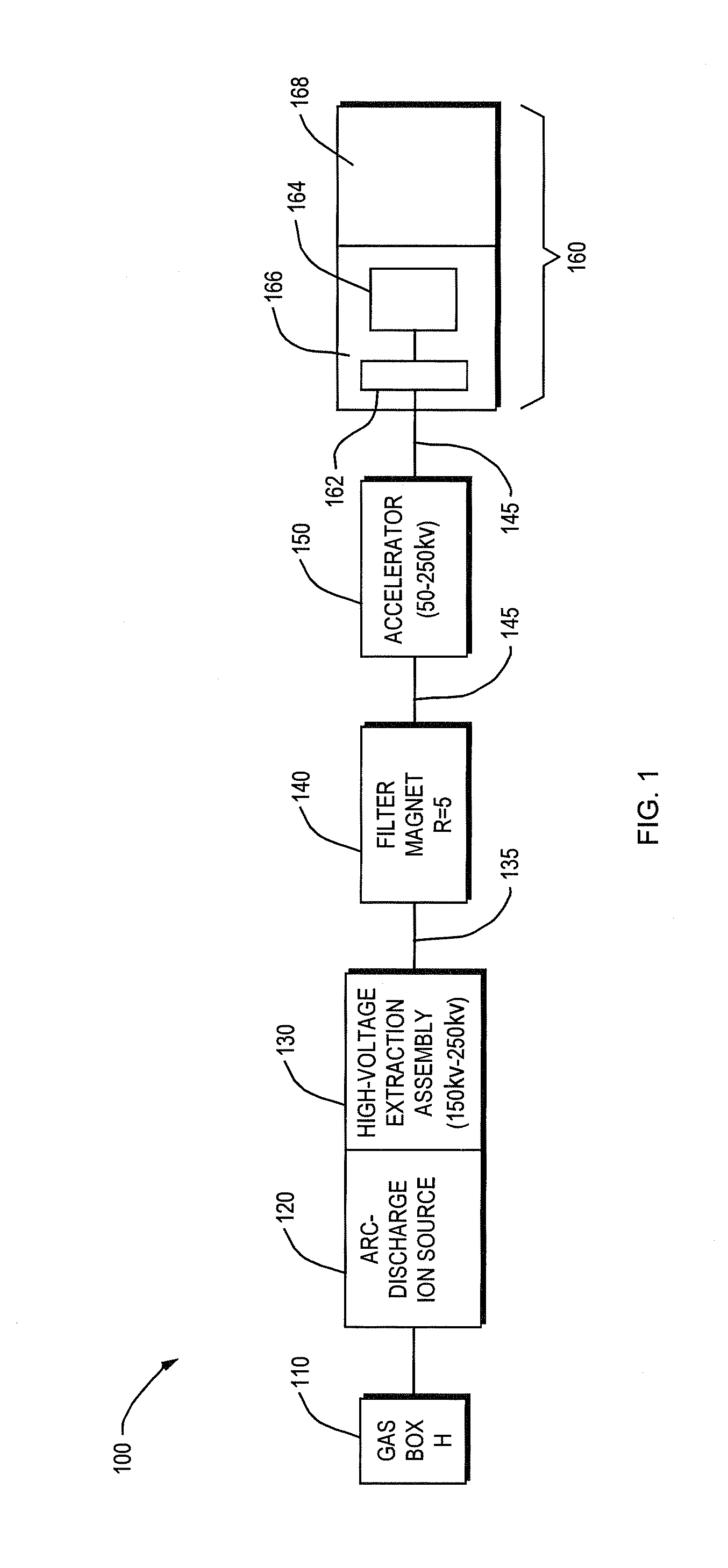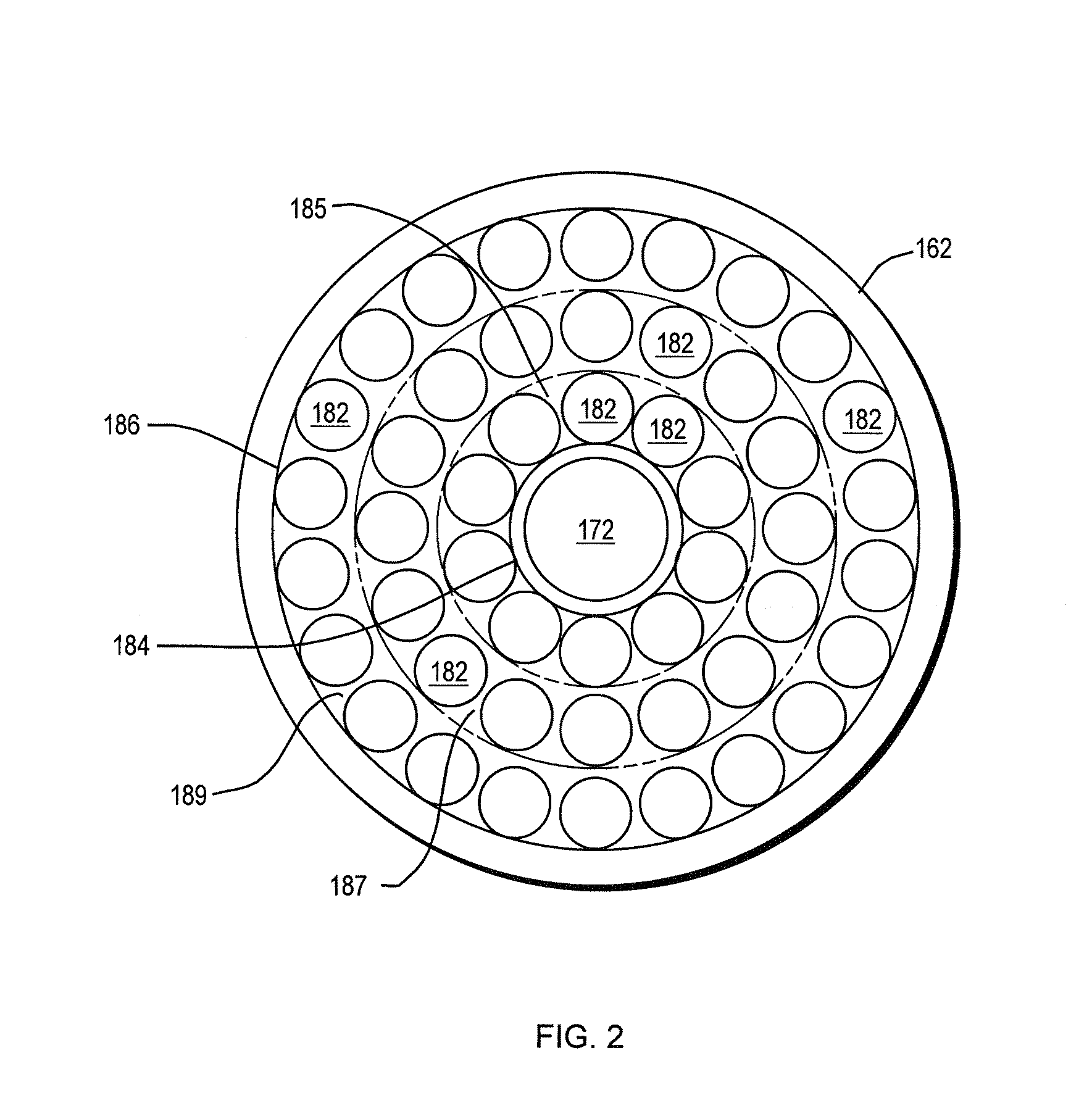Ion Implanter For Photovoltaic Cell Fabrication
a photovoltaic cell and implanter technology, applied in nuclear engineering, separation processes, mass spectrometry, etc., can solve the problems of wasting a substantial amount of silicon, unable to optimize the way of forming crystalline silicon bodies for photovoltaic cells, and affecting the efficiency of photovoltaic cells,
- Summary
- Abstract
- Description
- Claims
- Application Information
AI Technical Summary
Benefits of technology
Problems solved by technology
Method used
Image
Examples
Embodiment Construction
[0023]The invention relates to ion implanters useful for economically implanting semiconductor wafers preparatory to photovoltaic cell fabrication. Techniques for making semiconductor laminae for photovoltaic applications by cleaving after high-dose implantation of hydrogen or helium are described in co-owned U.S. application Ser. No. 12 / 057,265, Sivaram et al., “Method to Form a Photovoltaic Cell Comprising a Thin Lamina,” the disclosure of which is incorporated herein by reference. Hydrogen, helium, or both are implanted in a wafer of semiconductor material, such as monocrystalline silicon, at a depth defining a cleave plane, which determines a lamina thickness. Removal of the lamina from the implanted wafer is effected by, for example, annealing the wafer to provoke exfoliation of the lamina at the cleave plane.
[0024]For preparation of efficient photovoltaic devices, lamina thicknesses of about 1 micron and greater are desirable. The location of the cleave plane is related to the...
PUM
 Login to View More
Login to View More Abstract
Description
Claims
Application Information
 Login to View More
Login to View More - R&D
- Intellectual Property
- Life Sciences
- Materials
- Tech Scout
- Unparalleled Data Quality
- Higher Quality Content
- 60% Fewer Hallucinations
Browse by: Latest US Patents, China's latest patents, Technical Efficacy Thesaurus, Application Domain, Technology Topic, Popular Technical Reports.
© 2025 PatSnap. All rights reserved.Legal|Privacy policy|Modern Slavery Act Transparency Statement|Sitemap|About US| Contact US: help@patsnap.com



